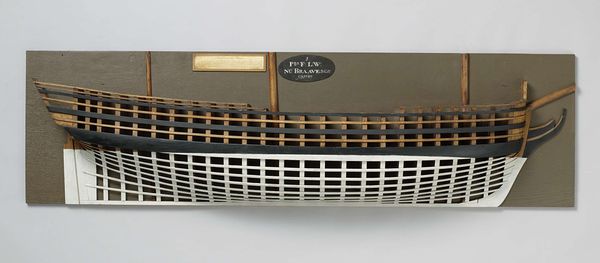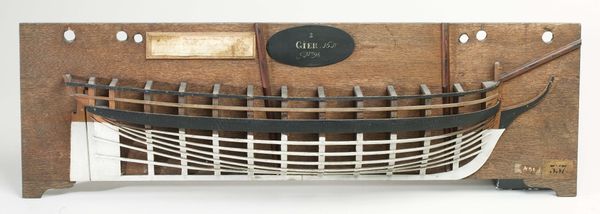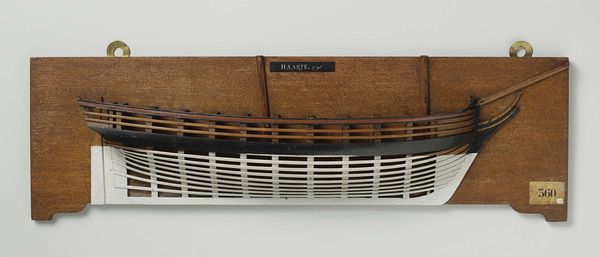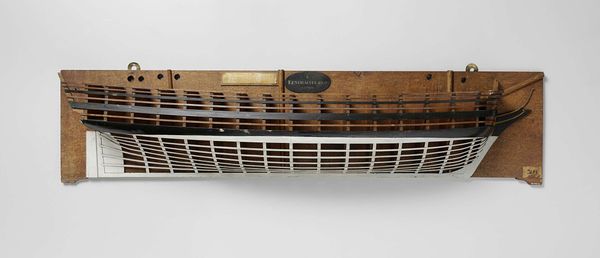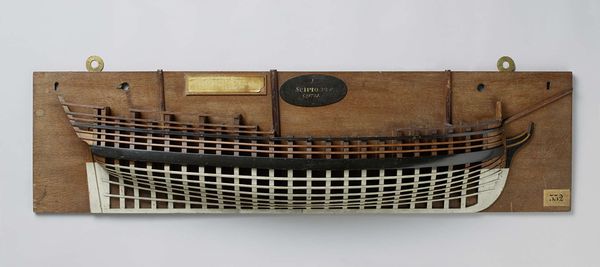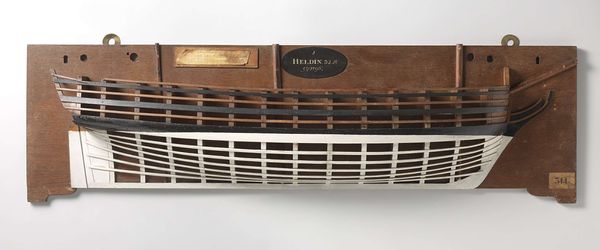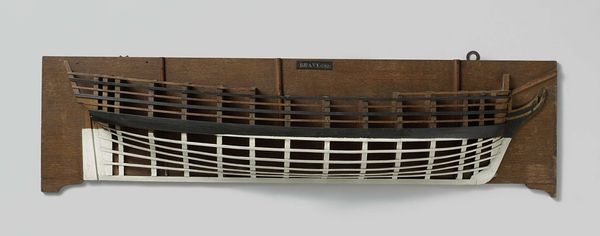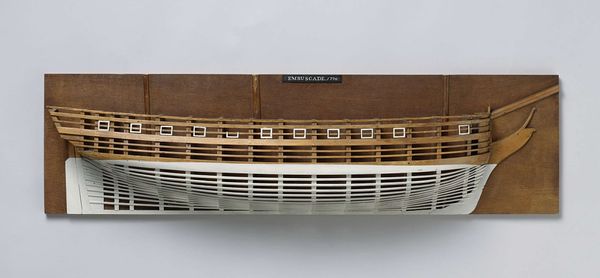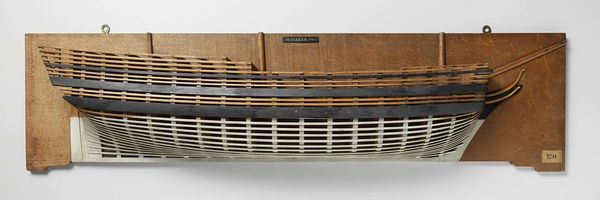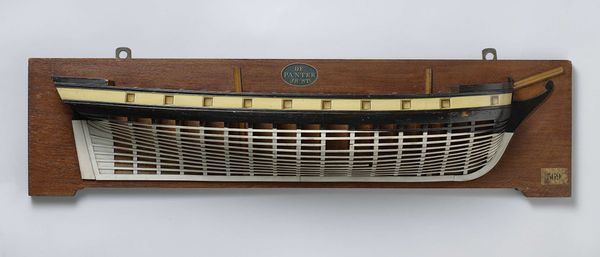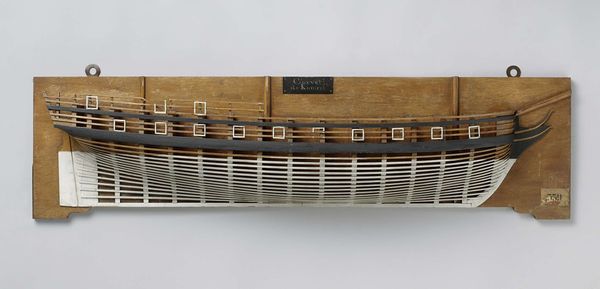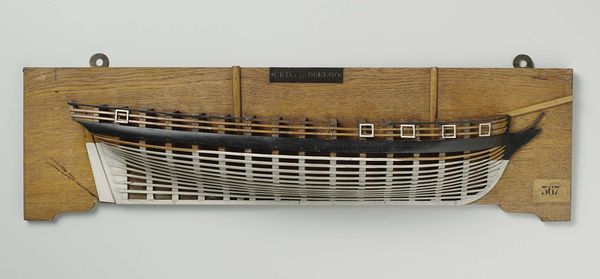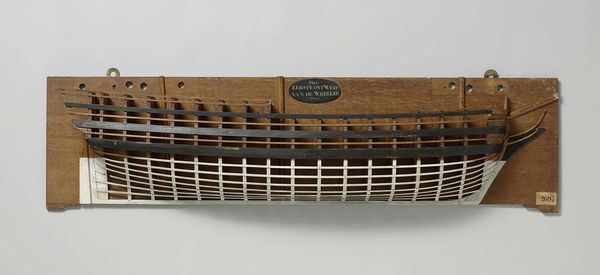
sculpture, wood
#
sculpture
#
architecture model
#
wood
Dimensions: height 25.8 cm, width 95.4 cm, depth 13.8 cm, thickness 1.1 cm
Copyright: Rijks Museum: Open Domain
Curator: The immediate feeling I get is one of constraint and the beauty within structure. Editor: That's an interesting response! I'm here to discuss an artwork entitled "Half Model of an 18-Gun Brig," created around 1795. What we see is primarily wood, meticulously shaped to represent half of a ship's hull. Curator: Precisely! The raw materiality—the wood itself, its grain—contrasts so strongly with the refined shaping, the intended purpose. We're looking at labor, design, and the transformation of materials, all right here. The half model shows how boats were designed before computers were common, and makes you think about the relationship of making something that big with such care and with the work it took to manufacture this beautiful object, showing care but also a way to design without paper. Editor: Absolutely. But I think this piece speaks to a darker history as well. These brigs, like the one modeled here, were often involved in colonial trade, sometimes directly or indirectly supporting the transport of enslaved people and goods produced through forced labor. Curator: You're asking us to look at not just the beautiful craftsmanship but the historical context in which it was conceived, and in the age it was constructed. Editor: Exactly! Consider who had the power to commission such a design, the societal structures that enabled its creation, and the potential human cost embedded in its very purpose. The object becomes a conduit for examining historical injustices, challenging us to think critically about aesthetic appreciation and its relationship to ethics. Curator: This challenges our appreciation! The materials and model embody labor but, also the materials carry colonial connotations. It's fascinating how the tangible object pushes us to reconcile the past's complexities with the present. Editor: Indeed. It makes us ask if the very concept of building and the design also speaks about colonization through power and its use during wartime and trade! Curator: So, what starts as an appreciation of craft quickly spirals into a reflection on broader socio-political dynamics. Editor: A stark reminder that art never exists in a vacuum! Curator: The form of production reflects an echo across different media and time. Editor: Which underscores why such analyses matter so much.
Comments
No comments
Be the first to comment and join the conversation on the ultimate creative platform.
